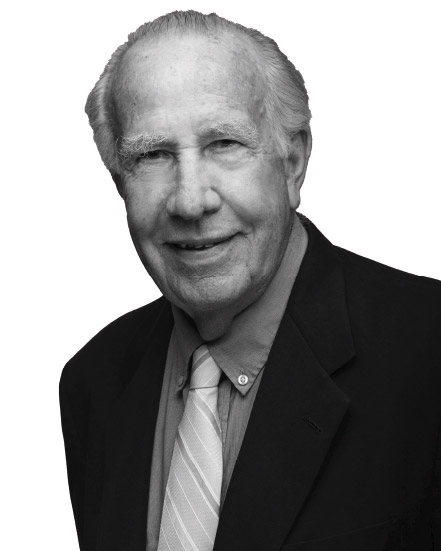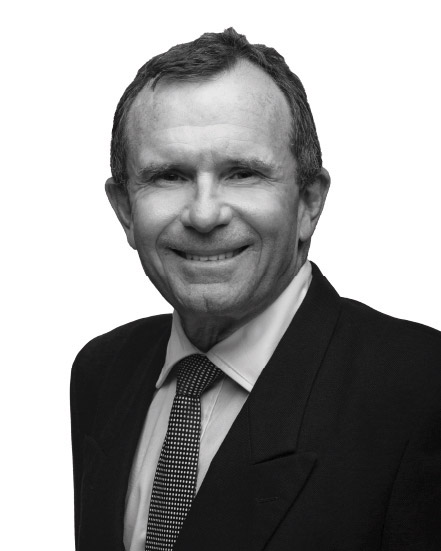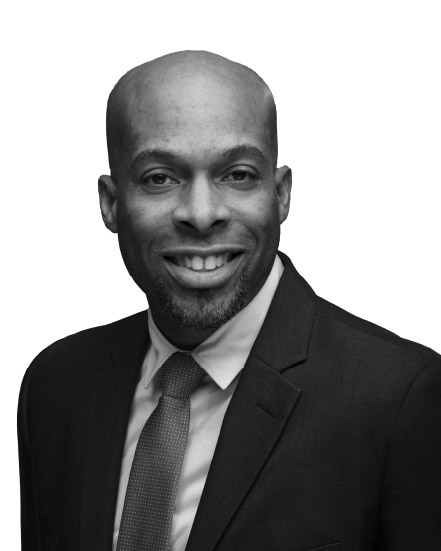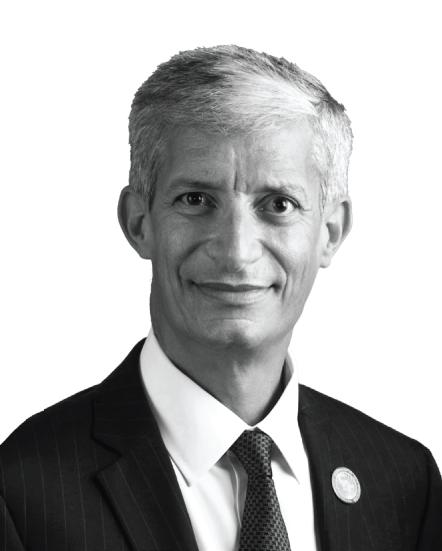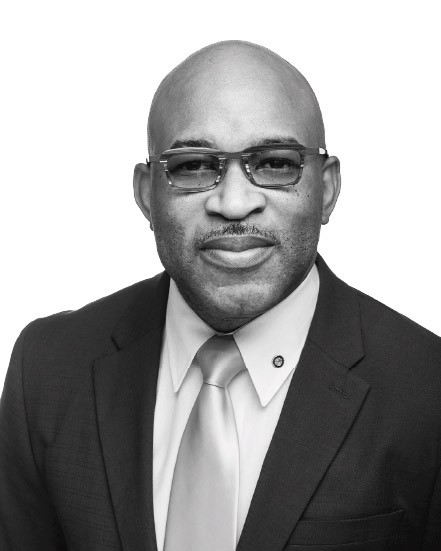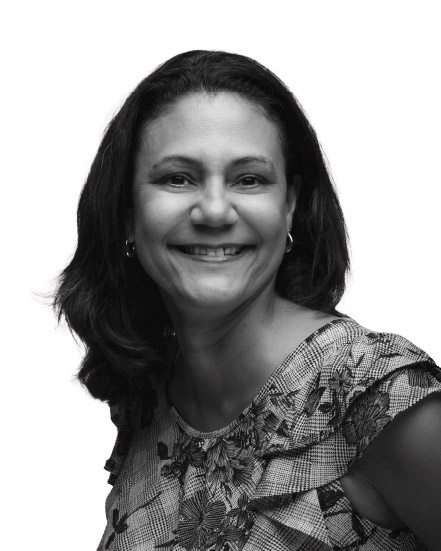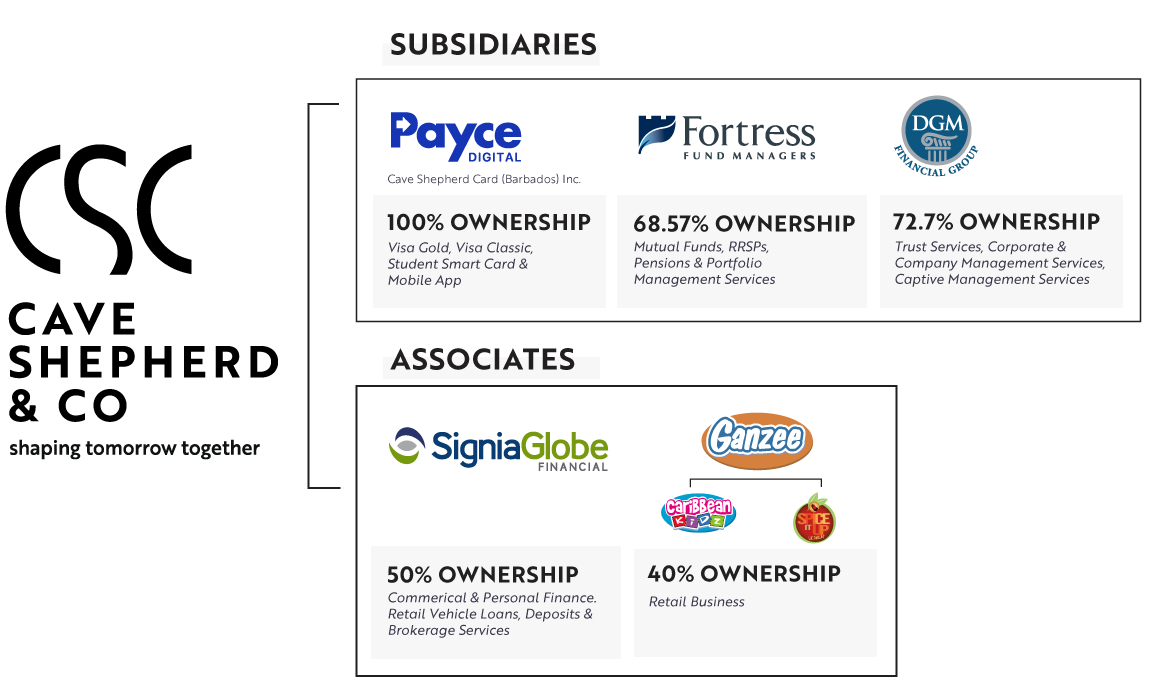Our Management
Our business started as a joint venture partnership between two men, Messrs Cave and Shepherd back in 1906.
Board of
Directors
Committees
of the Board
Executive
Management
Our Heritage
Discover some of the history and stories that have helped make us who we are today.
Our business started as a joint venture partnership between two men, Messrs Cave and Shepherd back in 1906.
Did you know that our humble beginnings began in Palmetto Street in Bridgetown where a general supply store was established?
How about the evolution from Joint venture partnership to private limited liability company to finally launching one of the islands first major Initial Public Offerings in 1971?
Or even the lobbying efforts of Maurice Cave and others which paid off when the Drawback of Duty Act was passed!
Discover our story and follow the fascinating journey that has made Cave Shepherd the company that it is today – a diverse and multi-faceted organisation with interests in retail, tourism, financial services, property development, renewable energy, and international business.
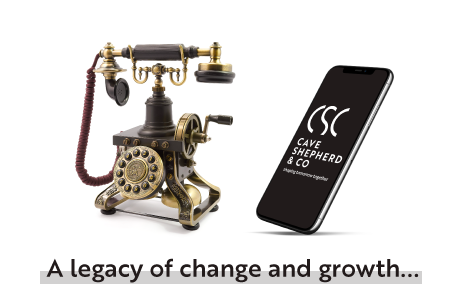

An Incredible Journey
at a Glance
Not short on business acumen, having both worked as salesmen from an early age at W. L. Johnson & Co. Ltd, the founders prided themselves on having a firm grasp of customer needs and wants.
The Provision Store supplied dealers and retail traders with wholesale goods, and planters with ‘feeding stuffs” from the busiest thoroughfares behind Parliament, not far from the firm’s bonded warehouse.
The Retail (“Dry Goods”) store occupied a premier position on Broad Street – Bridgetown’s main shopping corridor. Its arrival was met with considerable excitement. In fact, public enthusiasm reached such a pitch that several days before the official opening the store found itself overrun by eager customers. An article in the Agricultural Reporter of February 2, 1907, described the scene:
“…all day customers poured in through the side entrance in Manchester Lane and kept things running until the clerks were thoroughly exhausted…. To avoid repetition, and to enable them to arrange the store for opening day, Messrs. Cave and Shepherd will positively refuse admittance to all and any today… The Manager says the customers will be well rewarded by waiting until Monday when the windows are properly dressed, and the shelves arranged in proper order.”
Goods from the best known, most highly patronised makers of the time were retailed at The Ideal. Equally alluring were the exterior and interior of the new store:
“… the old-fashioned building was converted into a handsome ornamental pile that invited comparison with the very best business premises in the island. Commodious, light, and well ventilated, the Broad Street premises….are as comfortable and well appointed as ever a fastidious customer could desire, and fully merit the appellation of ‘Ideal Store’….
After just four years of operation, Messrs. Cave and Shepherd decided to modernise the retail premises of The Ideal in 1911, enhancing the use of floor space of 5.661 square feet. The various departments were carefully arranged to entice customers, with everything done to ease their journey through the store. The most popular departments lay at street level and the less frequented areas were housed upstairs, along with the Counting House or Office.
In 1915, the opportunity arose for the partners to purchase the adjoining property at Nos. 11 and 12 Broad Street increasing the floor space by 14,815 square feet. The Broad Street frontage was lengthened to include the façade of both buildings, while the back premises on Victoria Street were rented out.
At the Provision Store on Palmetto Street good progress continued and in 1917, the partners sold the general supply store to Mr Martin Doorly, marking the end of the firm’s involvement on the provision trade.
The 1920’s and 1930’s saw considerable change in the firm’s directorate and some uncertainty in its fortunes. In 1925, R. G. Cave introduced his son, Maurice, to the business. Newly out of Harrisons College at age 17, Maurice spent the next 5 years in various roles learning the workings of the firm and then on to the Belleville Business College in Canada. His return to Barbados coincided with the death of his father and in 1933 he became a partner of the firm and the Chairmanship was devolved to him at age 28.
In 1937, Mr J. P. Shepherd announced his retirement from the business. With no sons to succeed him, Mr Shepherd decided it was time to end his family’s involvement in Cave Shepherd and accordingly his capital interest was paid out.
Geoffrey, the Company’s future custodian was born in 1942 and the era was one of quiet growth and consolidation for both family and business.
In 1944, No. 13 Broad Street was acquired and the company began a second major expansion.
In 1951, Maurice decided to “go public” in a modest way, increasing Cave Shepherd’s capital base by inviting new investors in. The restructured company’s share capital consisted of 100,000 £ 1 preference shares, which were fully taken up. Maurice became Managing Director of the newly capitalised company.
In 1955, the Company remodelled its premises at the back of No. 13 Broad Street. The next year, the Company celebrated 50 years in business.
To serve local shoppers and visitors there were now 19 departments spread over 30,000 square feet of floor space. Some of the prominent departments included Liberty products, cosmetics, perfume, sweets, cigarettes, writing cases, liquor, bone china, mens suitings and toys. Also housed on the premises were the Ideal Agency (an affiliated trading company), and an insurance agency.
In 1958, the lobbying efforts of Maurice Cave and others were paid off when the Drawback of Duty Act was passed. The legislation’s purpose was to heighten the allure of Barbados as a tourist destination. Coupled with the establishment of the Barbados Board of Tourism, it was a development which pleased Maurice whose sights were now on the growing visitor clientele.
In 1958, a Cave Shepherd outlet was opened in Hastings, followed by an outlet established at the Airport. Next, in the early ‘60s, came a branch at the Bridgetown Harbour, designed to capitalise on the fast-growing cruise ship market.
By the mid sixties, Cave Shepherd embarked on yet another modernization program. Some departments were closed and others, such as ladies fashions, were given more space.
Cave Shepherd was now in the vanguard of Caribbean retail and with this in mind Geoffrey was shipped off to Britain where Geoffrey did a three-month stint at Selfridges in 1965.
On the evening of December 10, 1969, two weeks before Christmas, the store was ‘jam-packed’ with seasonal merchandise. By 10pm that night, the building was a blazing inferno. By early morning, everything was gone. Barbadians could hardly believe it when, exactly four days later; on December 15, 1969, Cave Shepherd reopened for business from a rented location at the corner of James and Lucas Streets. By the end of December, rented premises had also been found at 27 Broad Street, and in September 1970, a third place of business was opened on Victoria Street, parallel to Broad Street, one block away.
Just 27 years old, Geoffrey joined the firm, although Maurice would continue as Chairman until his death five years later, it was Geoffrey who would steer the ship from now on and take the company into the next century.
In 1971, the company launched one of the islands first major Initial Public Offerings (IPOs). No investment was too small and many Barbadians bought into Cave Shepherd with a token few hundred dollars. Among the subscribers were a substantial number who seemed more interested in saving the company rather than in making money. The offering was soon over subscribed, having attracted some 2,000 shareholders and raised $2 million. This sum was matched by the Cave family with $3 million investment from the old company holdings. So great was their confidence in the store’s future that 200 staff members stepped forward to purchase 100,000 shares. Another 100,000 were given free to staff as “a measure of appreciation of past services”. Thus was born a new version of the old company. Now publicly-owned and capitalised at $5 million. Its purpose was to take over the business and working assets of the firm, subject to liabilities, and to rebuild the store on Broad Street with all due speed.
In 1972, a new branch opened its doors at Sunset Crest on the island’s West Coast. To come was the flagship store in Bridgetown, which took place on October 2, 1972. It was the most modern of its kind in the Caribbean. “Designed by Tomlin Associates of Barbados and built by Clarence Johnson Associates of Antigua, with interior layout and décor by Cameron McIndoo of Canada.
Besides the company’s 75th Anniversary, 1981 marked another milestone. For the first time Cave Shepherd established a satellite operation overseas; Miami-based Cave Shepherd Inc. was established to improve efficiency, cost control and timing of imports coming from the United States. Sold to its management in the 1990s, this operation still thrives today under the name of ERP Exports Inc.
Several sections of the enlarged store were concessionaire-run. Later, concessionaires would take over many other lines long associated with Cave Shepherd, including toys, audio and electronics, linens and luggage, children’s and babies clothing, ladies apparel, costume jewellery and haberdashery. By 1992, about 15% of the business had moved to the concessionaire system.
In the late 1980s, Cave Shepherd launched its own easily obtainable credit card. By 2005, over 40,000 people were cardholders.
In June 1993, Cave Shepherd launched a 50/50 joint venture with Courts (Barbados) Ltd., a popular local furniture and appliance store. “Contempo”, as the new ‘store within a store’ was called operated from the top floor of the Broad Street premises.
The buoyant mood which had driven the company’s 1988 expansion did not last. Soon, Barbados’ economic difficulties began to cast their shadow over the company’s balance sheet – sales dipped as consumers felt the pinch. Then profits plummeted by 30% and it was clear that difficult decisions would need to be made.
Accordingly, after ending its long association with jeweller, J Baldini, Cave Shepherd entered a new business venture with Colombian Emeralds International, an established luxury retailer since 1980, with stores in the Bahamas,
St. Maarten, St. Croix, Antigua, St. John and St. Lucia. In 1992, Colombian Emeralds International (Barbados) Ltd opened its first duty free shopping facility at the Grantley Adams International Airport, and soon after that, two other shops; one on the ground floor of the Broad Street store and a spanking new 4,000 square foot jewellery store at No. 24 Broad Street. This was a bright spot on a cloudy sky and a harbinger of things to come.
Some solutions were more painful however and at the end of 1992, the company closed its Hastings branch followed by the Speightstown Branch in 1993.
In 1993, the picture had begun to brighten. Cave Shepherd’s diversification strategy was taking hold and profits were improving.
A Stock Split was announced in 1993 and a 25% dividend increase was declared. It was clear that the company had no intention of letting up its efforts to reconfigure itself. The company planned to go offshore to other Caribbean islands and “take an interest in a regional airline”. The public/private sector cooperation in establishing the Bridgetown Cruise Terminal of which Cave Shepherd, amongst others, had an interest was starting to bear fruit in the mid-1990s
Almost 90 years after Cave Shepherd first set sail, a second R. G. Cave – Ronald Geoffrey, this time, stood before shareholders to announce the launch of a new business. The venture was a mutual fund company – Fortress Fund Managers Ltd. – and it was captained by Roger Cave, a Canadian-trained chartered accountant and the fourth successive Cave to be involved in the business. Cave Shepherd held 37.5% of the shares in Fortress, and backers included Barbados Shipping & Trading Ltd and the Nation Corporation. The first product off the shelf was the Fortress Caribbean Growth Fund, a regional mutual fund investing primarily in companies listed on Caribbean stock exchanges. Other funds launched later include the Fortress Caribbean Property Fund, High Interest Fund and the new Caribbean Pension Fund for Defined Contribution Schemes.
The demise of Europe’s duty free regime and the steady growth of tourism in the Caribbean did not pass unnoticed. The idea to sink all of the retail operations in Barbados and the wider Caribbean into a new Caribbean entity focusing on the duty free trade was contemplated. A suitable partner was found in Dufry International AG (formerly Weitnauer Holding Ltd) and a 50:50 joint venture was formed in 2000. Thus on October 1, 2000, the new company, Duty Free Caribbean (Holdings) Ltd, was established. Its objective was to unite the strengths of both partners, thereby creating a strong regional company. Long time, competitor, Harrisons, was acquired a year later.
In 2005, the company joined forces with United Insurance Company Limited and Grace Kennedy & Company Ltd of Jamaica. Together, the three firms purchased General Finance Corporation, renamed Signia Financial Group Inc. Signia’s business plans showed the potential for “considerable development in future years”.
Duty Free Caribbean (Holdings) (“DFCH”) was formed in October, 2000 with the specific objective of bringing together the local expertise of Cave Shepherd and the global strength of Dufry, the Swiss-based travel retailer, to capitalize on the growth potential foreseen in the Caribbean duty free market.
At the end of July 2020, Cave Shepherd & Co. Limited announced its intentions to exit the Duty Free Caribbean (Holdings) partnership with Dufry. The decision not to inject any further funds into DFCH and to fully write down its investment (in DFCH) was not taken lightly by the Cave Shepherd Board. Since the global recession in 2007/08, the profitability of DFCH had steadily declined against a backdrop of challenges being experienced globally by traditional retailers, primarily the shift towards on-line commerce and the Company faced the added challenge of limited growth in the Barbados economy for over a decade. With major challenges expected over the next couple of years as DFCH recovers and rebuilds from the impact of the COVID-19 pandemic, and considering that a significant injection of capital would be required to take DFCH forward, the Board decided to prioritise the Company’s resources for the support and development of the other companies in the Group.
This difficult but necessary decision was an emotional one for all at Cave Shepherd given that the retail business is the legacy business dating back 114 years; and it is here where the Company formed some of its greatest partnerships with the people of Barbados – shareholders, staff, several of whom devoted a lifetime to the business, but also the many customers from every corner of the world, all of who supported the Company over the years.
DFCH’s majority partner (60%), Dufry, with a laser focus on global travel retail, confirmed their commitment to the business and now own 100% of DFCH. They will restructure and reposition DFCH to stabilize and grow the business in the years ahead.
Going Forward
The trading name “Cave Shepherd” was being used under license from Cave Shepherd & Co. Limited since DFCH’s inception in 2000. This was due to the strength of the brand in the Barbados market. Effective January 30, 2021, DFCH will start the rebranding process of those stores currently trading as Cave Shepherd, including the main department store on Broad Street and the Airport Arrivals store, as well as the stores located at Sunset Mall, Vista Worthing, Sheraton Mall and The Crane Resort.
Cave Shepherd & Co. Limited wrote off its investment in DFCH, taking a significant one-time loss of nearly BBD$40 million. Fortunately, Cave Shepherd diversified over the years and the public company, Cave Shepherd & Co Limited, very much continues with its other subsidiaries and associates – Fortress Fund Managers, SigniaGlobe Financial Group, DGM Financial Group, Payce Digital and Ganzee.
With a solid balance sheet, strong liquidity, a selection of highly profitable and growing financial services businesses, an excellent management team and a reputation and brand with a long and trusted history, Cave Shepherd & Co. Limited will focus on growing these exciting businesses and allocate the further capital into new opportunities that may arise. Cave Shepherd is changing and growing – and will continue to be a successful, diversified, regional public company.
Throughout its transformations, the company has held fast to an old tradition – that of placing utter trust and confidence in its own team members, believing not so much in their perfection as in their potential, their ability and their sound judgement.
The crew which has been handpicked to take the contemporary Cave Shepherd forward is lean, creative, competent and committed. And it is youthful. The ship’s future is not in doubt.
Sensitivity to trends, realism, adaptability, respect for others, public trust, inclusive management and imaginative Board development – these are among the factors identified by staff and others to explain Cave Shepherd’s survival through an epic, sometimes turbulent 100-year journey, from wholesale and retail to concessionairing and joint venturing, from public-private partnerships to inter-social collaboration, from modest family venture to corporate colossus.
Cave Shepherd has learnt its lessons well. Today, decision-making in the company rests largely on three pillars – sheer entrepreneurial instinct, a hard assessment of pertinent trends and events (local, regional and global), and a fundamental understanding that human beings count more than profits. It is a strange fact, but – as the company’s directorate can affirm – profits flow best when human considerations predominate.


